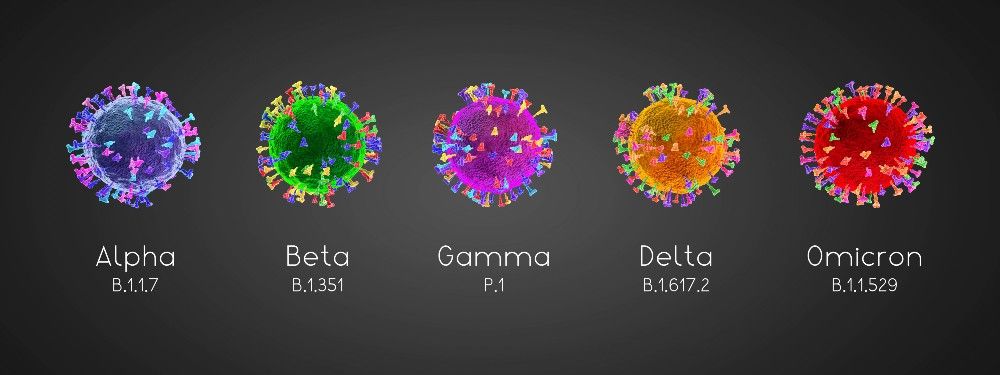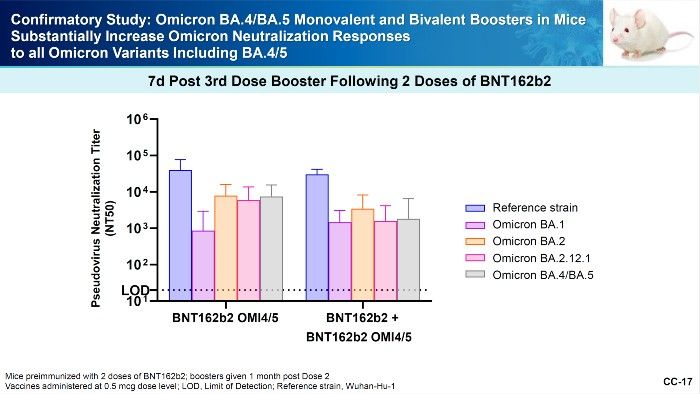The Autumn COVID-19 Booster Is Here: Is it Safe and Effective?
Starting September first, the first of the autumn boosters began to be available, but individuals may be concerned about their efficacy and safety. Infection Control Today® looks at the data.
Alpha, Beta, Gamma, Delta, Omicron COVID-19 variants (Adobe Stock)

Earlier this week, the FDA authorized a bivalent booster for SARS-CoV-2 which contains the spike protein of the Ancestral Strain (original 2020 strain) and the BA.4/5 variant. On September first, the Centers for Disease Control and Prevention (CDC) recommended the administration of the newly reformatted Pfizer/BioNTech booster for individuals 12 years and older. The reformulated Moderna booster was recommended for adults 18 years and older.
The reformulated booster appears to be safe, and much needed in view of 500 deaths a day from COVID-19 and the growing dangers of long COVID-19 with each reinfection.
While some controversy surrounds the booster, much of this is unfounded. There have been 2 clinical human trials for SARS-CoV-2 boosters—1 for the Ancestral Strain, and the other for a bivalent booster which also incorporated the BA.1 spike protein. The BA.1 booster clinical trials took months to complete. Meanwhile, the virus was not complacent, it continued to mutate, from BA.1 to BA.2 to BA.2.12.1 to BA.4/5. By the time the clinical trial was completed, the virus had undergone 3 major evolutions.
Figure 1. Omicron BA.4/BA.5 Monovalent and Bivalent Boosters in Mice (Courtesy of Centers for Disease Control and Prevention)

All data to date has shown the vaccines to be effective in preventing severe disease and hospitalizations. Because of the immune escape potential of the BA.4/5 Variant, the FDA asked Pfizer/BioNTech and Moderna to reformulate the vaccine to instead of including the BA.1 spike protein to incorporate the BA.4/5 spike protein (BA.4 and BA.5 have the same spike protein). According to the September first CDC Advisory Committee on Immunization Practices (ACIP) meeting, there are only 10 changes in the genome between the BA.1 and BA.4/5 spike protein. Otherwise, the BA.1 and BA.4/5 bivalent vaccines are identical. The United Kingdom has approved and is administrating the bivalent BA.1 vaccine.
Why did the FDA ask for the reformulated BA.4/5 booster? It is probably because the immunity elicited by the BA.1 strain is weak at best, and one can easily argue the BA.1 wave was the most devastating to date due to its high infectivity. Nationally, it caused more deaths than the DeltaVariant, and the anticipated silver lining of a large number of people becoming immune to SARS-CoV-2 did not occur. According to the University of Washington Institute for Health Metrics and Evaluation, infection with the Ancestral, Alpha and Delta Variants confers a 78% protection against reinfection at 40 weeks. This, however, drops to only 29% with the Omicron Strain (B.1.1.529, B.1.1.529.1, B.1.1.529.2).
Figure 2. Confirmatory Study: Omicron BA.4/BA.5 Monovalent and Bivalent Boosters in Mice (Courtesy of Centers for Disease and Prevention)

Antibody levels elicited by univalent and bivalent BA.4 boosters have also been measured in mice. The research was presented at the September 1, 2022, CDC ACIP meeting by Kena Swanson, PhD, vice president, Viral Vaccines Research and Development at Pfizer. The results found that the BA 4/5 monovalent and bivalent vaccines greatly outperformed the Omicron BA.1 monovalent vaccine. The BA 4/5 boosters outperformed the original Ancestral Strain booster in the production of antibodies to BA.4/5.
At a dosage of 1.0 mcg, the monovalent booster increased neutralizing antibodies by approximately 6.2 fold and the bivalent by 2.6 fold. (See Figure 1.)
Of interest is that the BA.4/5 boosters also produced robust antibody production to the wild-type or Ancestral Stain, even greater than that produced to the BA.4/5 Variant. The reason for this may be the phenomenon called “antigenic sin.” (It is not actually a “sin” but that is what it is called.) “Antigenic sin” imparts the biological advantage of being able to rapidly respond to a similar variant without starting antibody production from the beginning. But it also can mean that the maximum boost in immunological response may be to the virus that an individual is first exposed to.
At a lower booster dosage (0.5 mcg), the results of the different boosters were similar except for antibody production to the BA.2 Variant. (See Figure 2.)
Thus, ample safety data and immunological response data indicates the reformulated boosters to the BA.4/5 Variant will provide an improvement in efficacy. The magnitude of this improvement is not known, and the mitigation of this augmentation due to “antigenic sin” is also not known.
In retrospect, it may have been better to have produced and distributed a monovalent BA.4/5 booster which relies on “antigenic sin” for the augmentation of immunity to the Ancestral Variant. No one really knows.
Similar to the flu vaccine, to maintain efficacy, there is no time for clinical trials prior to vaccine production and administration. However, efficacy will be tracked post distribution. One thing is almost certain, if production is delayed and another immune-escape variant occurs, vaccine efficacy will fall, and recently variants have been occurring every 1 or 2 months.
In the beginning of the pandemic, mRNA vaccines were heralded as a major breakthrough allowing rapid adaptation and distribution of a reformulated vaccine. To accomplish this feat in 2 months is just remarkable and validates the initial optimism for this technology.
All and all, I feel a monovalent vaccine booster for BA.4/5 may have been better. However, the current authorized BA.4/5 bivalent booster promises to give much better protection to the BA.4/5 variant than the original booster. It has been 4 months since my last booster, and I will be first in line to receive the newly reformulated version.

Show, Tell, Teach: Elevating EVS Training Through Cognitive Science and Performance Coaching
April 25th 2025Training EVS workers for hygiene excellence demands more than manuals—it requires active engagement, motor skills coaching, and teach-back techniques to reduce HAIs and improve patient outcomes.
The Rise of Disposable Products in Health Care Cleaning and Linens
April 25th 2025Health care-associated infections are driving a shift toward disposable microfiber cloths, mop pads, and curtains—offering infection prevention, regulatory compliance, and operational efficiency in one-time-use solutions.
Phage Therapy’s Future: Tackling Antimicrobial Resistance With Precision Viruses
April 24th 2025Bacteriophage therapy presents a promising alternative to antibiotics, especially as antimicrobial resistance continues to increase. Dr. Ran Nir-Paz discusses its potential, challenges, and future applications in this technology.